CASE STUDIES: Treatment Options for Wounds in Cancer Patients
Wounds arising due to generalized cancerous diseases or their treatments require specific procedures to support healing. To illustrate, we select three brief case studies from our practice, accompanied by rich visual material.
Case Study 1
In the first case, we look at the treatment of a man who had a skin carcinoma removed from his scalp in November 2021. This was followed by additional treatment using radiotherapy, which started on January 4, 2022, and ended on February 4, 2022. After the operation, there was a circular healed scar on the scalp, and this area was irradiated using an X-ray irradiator over 12 fractions, three times a week. After the radiotherapy ended, a grade II post-radiation reaction with moist desquamation of approximately 3×4 cm appeared.
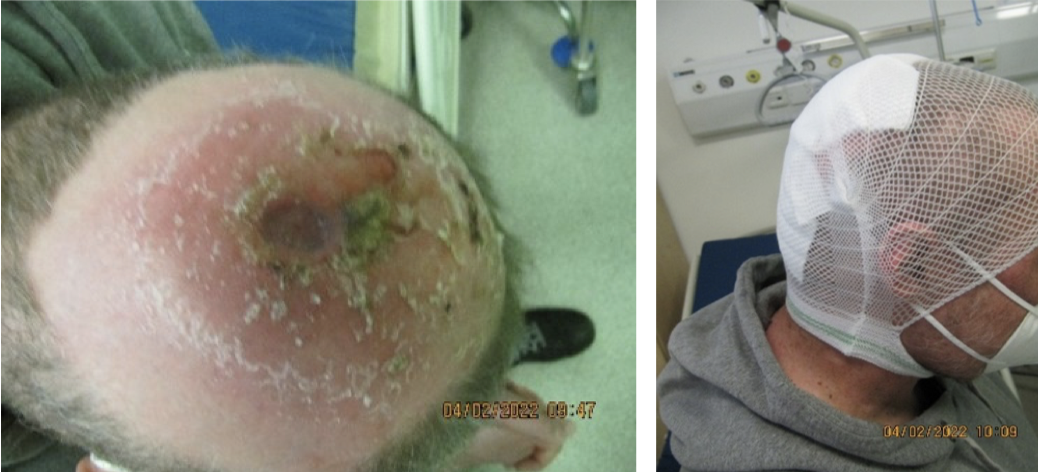
The surrounding area was dry. The wound was treated with Prontosan solution and then covered with HydroClean dressing of 7.5×7.5 cm. The surrounding area was moisturized with Cavilon cream. Dressings were indicated every 3 days. From February 10, 2022, the treatment was changed to applying a Prontosan solution compress for 20 minutes, followed by debridement of dry skin, and then HydroClean dressing of 5 cm was applied again.
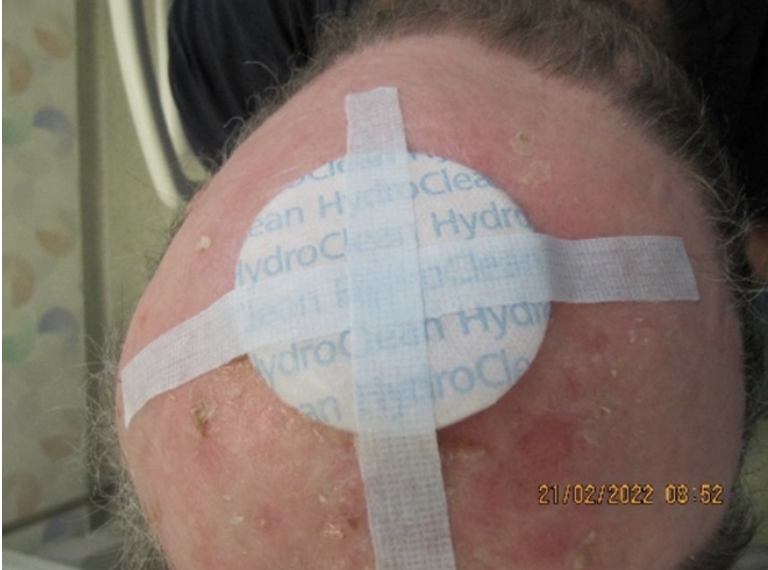
Dressings were again indicated every 3 days. During the dressing on February 24, 2022, healing was observed, and further treatment was sufficient with only Cavilon cream.
Case Study 2
The second case study involves a woman who visited FN Olomouc after long-term difficulties – she had observed a finding on her breast for 3 years but was afraid to go to the doctor, so she sought medical care only when the tumor gradually ulcerated, consuming the entire right breast. At her first visit on August 28, 2018, an ulcerated tumor of 10×6×7 cm was found, along with metastatic involvement of the skeleton, adrenal glands, and uterus. Based on the findings, chemotherapy and simultaneous pain management were initiated.
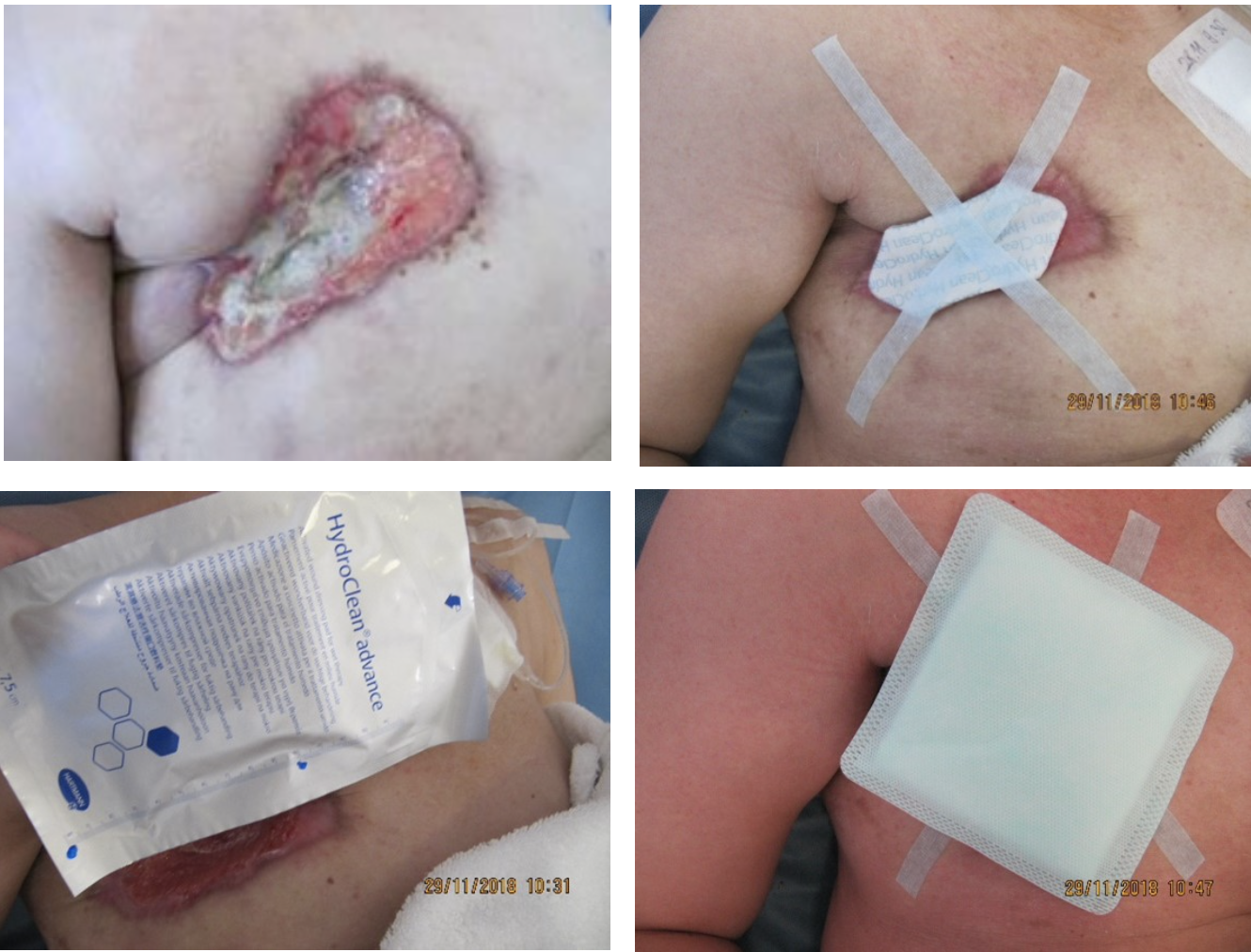
Dressing changes using Prontosan solution, HydroClean, and Zetuvit Plus were indicated. Dressings were performed every 2 days at home, and once a week, checks were conducted at FN Olomouc.
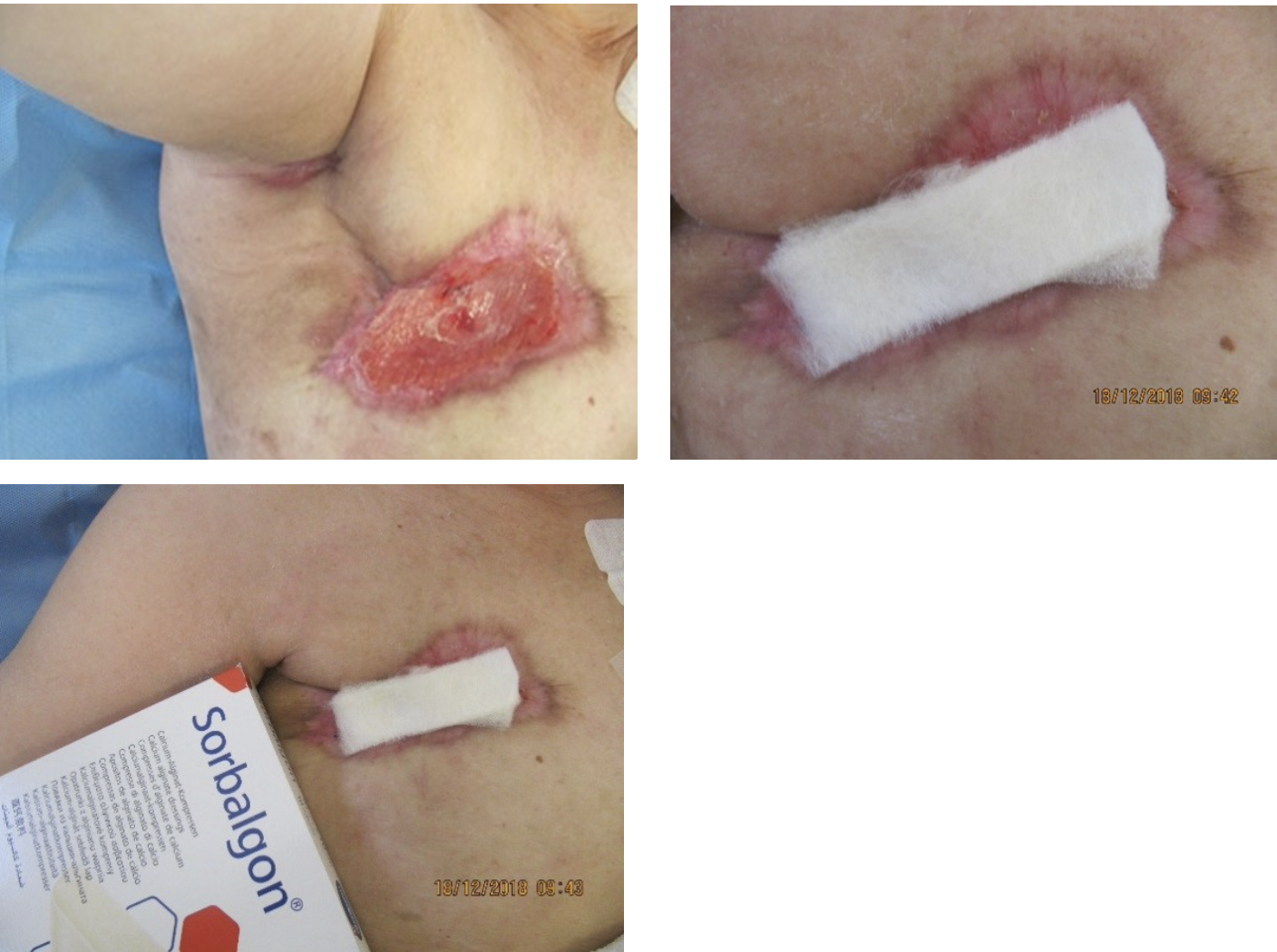
In January 2019, the wound had already become smaller but still had significant exudate. Therefore, Prontosan rinses were chosen, followed by Sorbalgon dressing. This treatment procedure led to further healing of the wound, and it was sufficient to moisturize the wound with a hydrating cream without the need for a dressing.
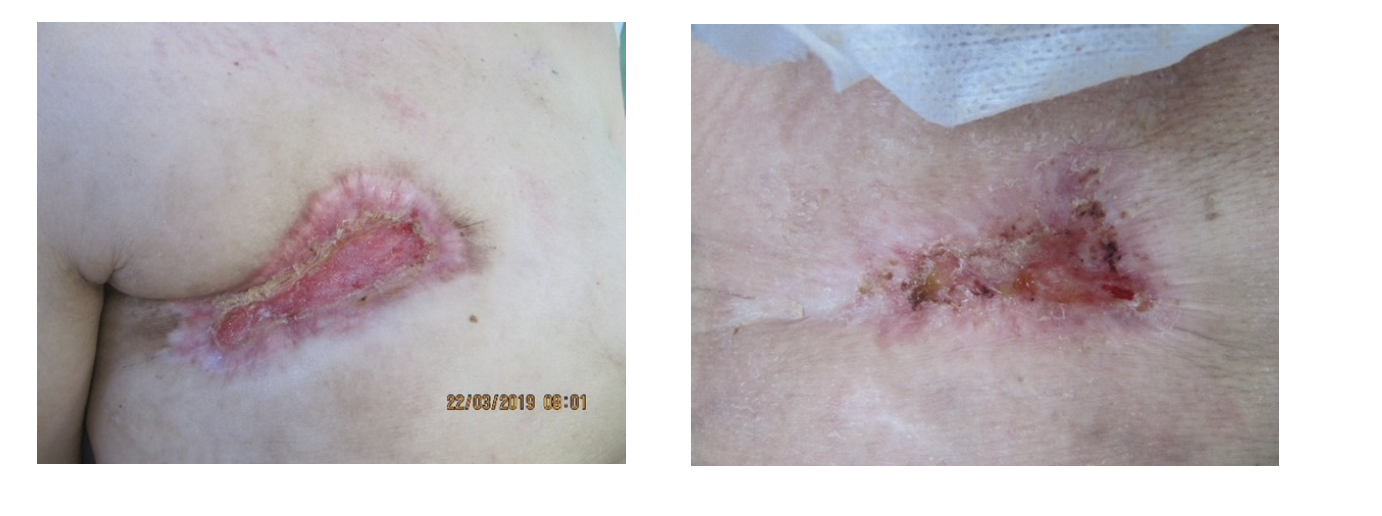
Case Study 3
The last case study involves a patient with a tumor on the front of her chest. She postponed visiting the doctor for several months until the disease, with its odor and exudate, made it impossible for her to work. At the time of her first visit to the doctor, an ulcerated tumor mass of 32×20 cm was discovered on her chest. The wound was coated, malodorous, and had a significant amount of exudate, with a yellow-coated base.

CT examination revealed metastatic involvement of the lungs and bilateral fluidothorax. A pleural puncture was performed, a port implanted, chemotherapy, and biological treatment were initiated.

Gradually, the disease progresses, causing irregularities in the chest wall, and brain metastases appear, leading to the initiation of brain radiotherapy. The patient is very weak, in a wheelchair, cared for by her mother, and the dressings are managed by a mobile hospice team. The use of Atrauman and Zetuvit Plus dressings or the newer Resposorb Super compress was recommended.
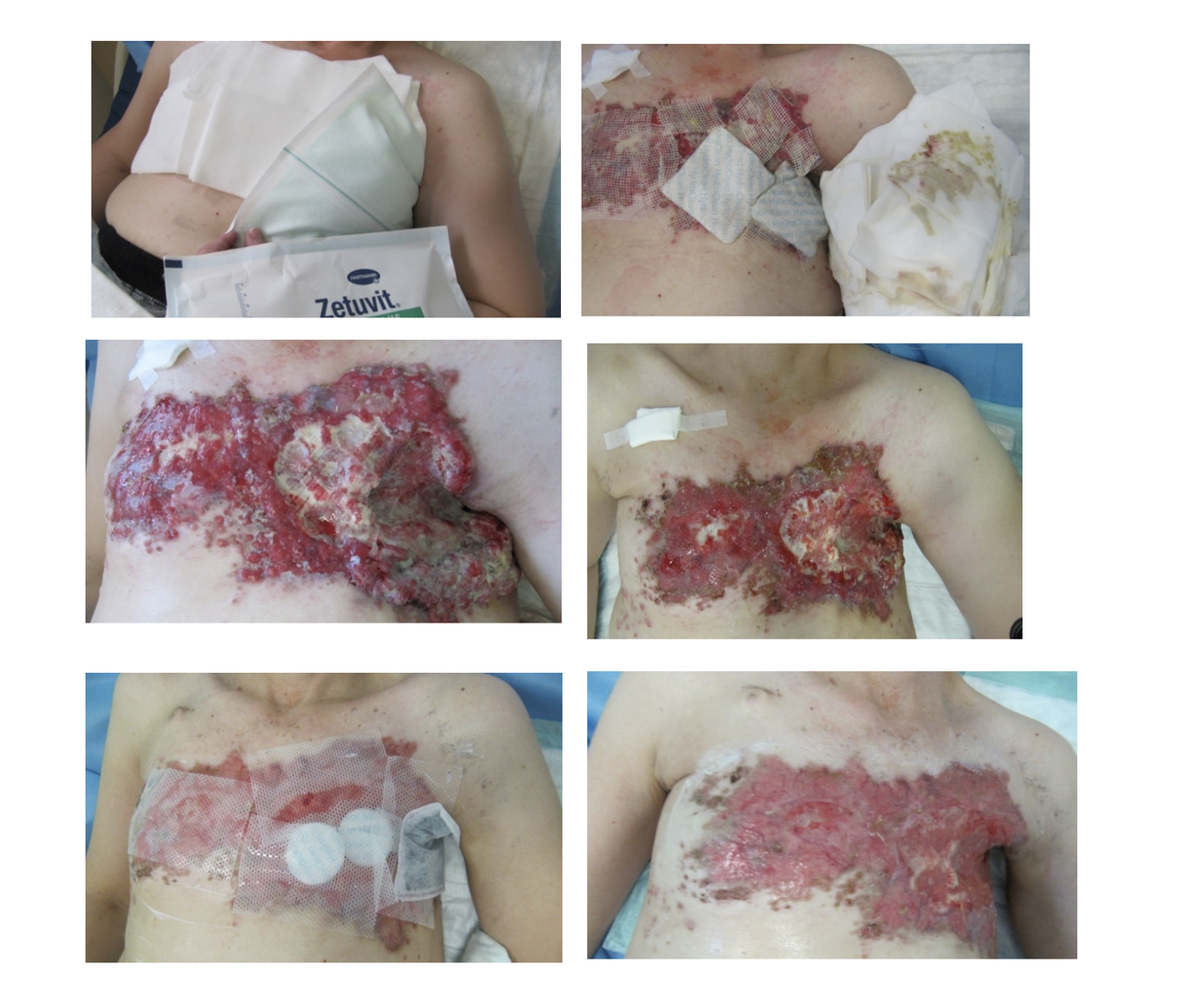
Bc. Petra Lexová, Kateřina Strejčková
Oncology Clinic, Faculty of Medicine, Palacký University and FN Olomouc
Did you like this article? Would you like to comment on it? Write to us. We are interested in your opinion. We will not publish it, but we will gladly answer you.

